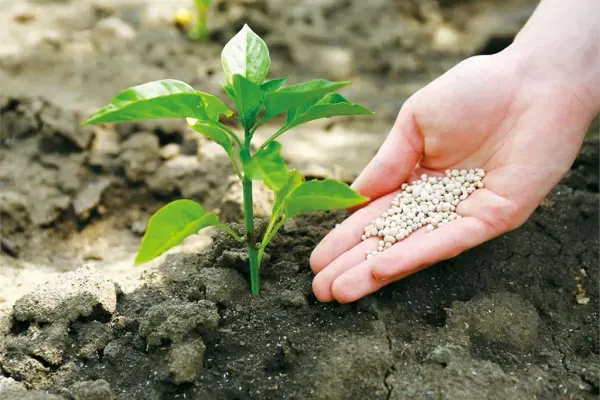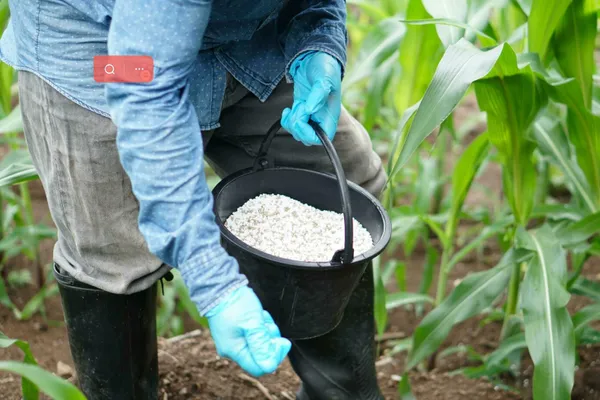Avoid your inquiry is delay response, please enter your WhatsApp/Skype along with the message, so we can contact you at the very first time.
We will reply you within 24 hours. If for urgent case, please add WhatsApp/WeChat:
Warning: Undefined variable $public in /www/wwwroot/lvfertilizer.com/wp-content/themes/hyhadmin/header.php on line 350
Warning: Trying to access array offset on value of type null in /www/wwwroot/lvfertilizer.com/wp-content/themes/hyhadmin/header.php on line 350
,. Or call
Warning: Undefined variable $public in /www/wwwroot/lvfertilizer.com/wp-content/themes/hyhadmin/header.php on line 350
Warning: Trying to access array offset on value of type null in /www/wwwroot/lvfertilizer.com/wp-content/themes/hyhadmin/header.php on line 350
directly.
Plants stall when soil runs short of nutrients. Yields dip, leaves pale, bloom slows. A balanced 10-10-10 fertilizer restores what’s missing so gardens and lawns bounce back—safely and simply.
10-10-10 fertilizer is best for general feeding when soil tests show broad, moderate needs. It suits mixed garden beds, ornamentals, shrubs, and many lawns that are not under phosphorus restrictions. With equal parts nitrogen, phosphorus, and potassium, it supports leafy plant growth, rooting, and resilience. Use it as a balanced fertilizer at the right time of application, follow the fertilizer label, and water in. For best results, start with a soil test and adjust for plant needs.
[Image Placeholder]
The three numbers (10-10-10) are the npk analysis: nitrogen, phosphorus, and potassium—the three primary macronutrient elements plants need most. A 10-10-10 fertilizer is a balanced 10-10-10 blend that delivers equal parts of N, P, and K. Said simply: it’s a 10-10-10 npk fertilizer for general feeding across many landscapes. 10-10-10 fertilizer is a balanced choice when you want steady plant food that supports healthy plant growth.
When it fits:
Tip: Before adding 10-10-10, take a soil test. It tells you whether this type of fertilizer is appropriate and prevents overuse of phosphorus in regions where it’s already high.

10-10-10 fertilizer
For many home landscapes, granular blends are convenient. A granular fertilizer releases nutrients as pellets dissolve with moisture. A 10-10-10 fertilizer is often recommended as “general purpose,” so it can fit mixed planting beds and many turf situations—so long as local rules allow phosphorus on turf. 10-10-10 fertilizer is also used as a light, broad feed to keep plants within a bed growing evenly.
Regulatory note for lawns: Some areas restrict P on turf to protect waterways. In those regions you may need a low- or zero-P lawn fertilizer unless a soil test proves a need. Always check local guidance.
Think of 10-10-10 as “steady and sensible.” It’s great when plants need to thrive with no extreme push in one direction.
At-a-glance table
| Plant group | When 10-10-10 shines | Notes |
| Mixed garden beds | Seasonal tune-ups | Safe choice where soil test shows moderate needs |
| Flower borders | Bud build-up without excess N | Too much nitrogen can reduce bloom on some crops |
| Shrub hedges | Even feeding, simple schedule | Water in to reach the root zone |
| Many lawns | Where phosphorus is permitted | Follow the fertilizer label closely; avoid runoff |
| Vegetable garden | Early growth and mid-season support | Adjust by crop; see your test and local guidance |
A soil test is your map. It shows pH and nutrient levels, so you can select a formula and application rate with confidence. Most extension services recommend testing every few years, or before planting a new area. That’s the single best way to give plants the nutrients they need—and nothing extra.
Best practices for using fertilizer:
“Fertilize based on soil test results and plant needs.”—University Extension guidance.

How to fertilize safely
Granular 10-10-10 fertilizer is simple for beds and turf. It’s easier to meter and can be slow- or quick-release. Liquid 10-10-10 acts faster but needs more frequent passes. For containers or quick corrections, liquids shine, and they can be applied with a garden hose end sprayer. For broad landscapes, granules are often handier.
Uniform coverage prevents stripes and fertilizer burn. You can spread by hand or with a spreader; most gardeners prefer a broadcast or drop spreader for turf. Always follow the fertilizer label, then spread the fertilizer in a consistent pattern. Many guides suggest walking perpendicular passes to apply fertilizer evenly across the area.
Step-by-step (summary)
Timing depends on crop, climate, and plant needs. Cool-season turf is often fed spring and early fall; warm-season turf favors late spring into summer. Different times of the year call for different approaches—do not fertilize frozen ground, and avoid late fall or winter feeds that can leach or run off. Always check local recommendations for turf.
In beds, apply at planting (or shortly after) and again as buds form. Match the time of application to growth stages so plants get what they need to thrive without waste. If growth is lush and dark, use less.

When should I fertilize during the growing season?
Yes—when balanced nutrition is the bottleneck. Enough phosphorus and potassium help roots and buds; sufficient nitrogen sustains new growth to fuel bloom. But too much N can delay harvest on fruiting vegetables. That’s why 10-10-10 works as a steady, middle-ground feed rather than a push in one direction.
Mini-chart: roles of N-P-K
| Nutrient | What it does | Signs you might need it |
| Nitrogen | Leaves, stems, chlorophyll; quick plant growth | Pale leaves; slow growth |
| Phosphorus | Roots, flowers, fruit set | Weak budding; purpling on some species |
| Potassium | Stress tolerance, water balance | Edge yellowing; weak hardiness |
Fertilizer generally helps when used correctly, but mistakes are common. Over-application risks fertilizer burn and wasted product. Skipping clean-up lets phosphorus-bearing clippings or particles wash into drains after rain. The best prevention is a soil test, careful spacing, and sweeping hard surfaces.
Where phosphorus rules apply (many municipalities), low-P turf feeds are required unless you have a test showing deficiency. That’s why checking local ordinances before you buy lawn products matters. Fertilizer is often regulated near lakes and rivers to protect water quality.
A community garden (mixed perennials, herbs, and small fruit) ran a soil test showing broad, moderate needs and slightly low organic matter. The team chose a balanced 10-10-10 program: one early-season pass and a mid-season light feed. Over one season they reported sturdier stems, steadier bloom, and easier watering—fewer peaks and dips in growth. Takeaway: when nothing is wildly deficient, this fertilizer promotes healthy plant growth across diverse beds.
As a leading manufacturer and exporter of high-quality fertilizer products based in China, we serve Agricultural Distributors & Importers, Commercial Farm Owners & Cooperatives, Government & NGO Agricultural Projects, and Fertilizer Brand Owners (OEM clients) worldwide.
Why partner with us for 10-10-10?
Action: Tell us your target crops, climate, packaging, and compliance needs. We’ll size the program and advise the time of application windows for your markets.
You may encounter phrases like “10-10-10 all-purpose soil fertilizer”, or “all-purpose soil fertilizer by gardenera,” “gardenera 10-10-10,” “espoma garden” blends, “garden food,” or “plant food for indoor” plants. These are marketing names. What matters is the analysis and instructions—always follow the label for application and your local rules. (Brand names shown as examples only; we also produce private-label equivalents for B2B.)
When in doubt, a well-made balanced fertilizer like 10-10-10 would cover many bases—but always match it to test results and crop stage. In sensitive watersheds, a different type of fertilizer with lower P may be required.
A bag marked 10-10-10 literally contains 10 percent each of nitrogen, phosphorus (as P₂O₅), and potassium (as K₂O). The rest is carrier and conditioners that help spread and dissolve the nutrients. That’s why 10-10-10 fertilizer is a balanced feed that’s easy to plan around for many sites. Using fertilizer without waste (and without stripes)
Stripes and hot spots come from uneven coverage. Follow the pattern in the manufacturer guides: set the spreader correctly, walk steady, and overlap slightly. If you’re unsure, practice on a tarp. Many extension guides show how to avoid misses and doubles so coverage stays even.
What is 10-10-10 fertilizer best for in a small garden?
General refresh feeding in mixed beds, perennials, and small fruit when tests show moderate needs. It’s simple and safe when used by the gardener who follows the label and waters in.
Is 10-10-10 safe for my lawn?
Yes where phosphorus is allowed and the fertilizer label is followed. Some regions restrict P; use approved products there. Apply only during active growth—never on frozen ground—and sweep granules from pavement.
Should I pick liquid or granular?
Choose liquid for quick fixes and containers; choose granular for broad spaces. Slow-release versions reduce leaching and labor. Match format to your workflow and your plants’ stage.
How often should I test soil?
Every few years in established areas and before planting new beds or turf. Tests guide the application rate and prevent waste.
Will 10-10-10 make my flowers bloom more?
It supports roots and buds while keeping leaves fueled. Don’t overdo nitrogen, or flowering and fruiting can stall. Feed as buds form and water in.
Can I use 10-10-10 indoors?
Some labels market “plant food for indoor” with balanced ratios. Containers may prefer liquid feeds at lower doses. Always read the label for application and watch for salt build-up.
You asked what 10-10-10 is best for; now you know where it fits—garden beds, ornamentals, and many lawn areas (where permitted).
Balanced nutrition helps healthy plants without guessing.
Our factory offers custom, compliant 10-10-10 programs with slow-release and liquid options to match your market.
If you want a turnkey 10-10-10 program for distributors, farms, or public projects, contact us to use this fertilizer effectively and reliably at scale.
Know about 10-10-10 fertilizer: it delivers equal parts N-P-K and suits mixed beds, shrubs, and many turf areas. (明尼苏达大学扩展中心)
Start with a soil test; then pick a formula and application rate confidently. (北卡罗来纳州州立大学扩展资源目录)
Choose liquid 10-10-10 for fast fixes; choose granular or slow-release for steady, low-labor feeding.
Apply carefully—hand or with a spreader—and water in toward the root zone to avoid fertilizer burn. (堪萨斯健康院子)
Respect local phosphorus rules for lawn areas to prevent runoff. (普渡大学扩展)
For B2B buyers: we supply private-label 10-10-10 fertilizer programs worldwide—custom formulas, packaging, and documentation ready to ship.
If you’d like sample specs, SDS, or private-label mockups, tell us your market and crops—we’ll prepare options the same week.